As wolves have transformed into dogs, they’ve integrated into humans’ lives in more ways than any other animal. Dogs have been herding, hunting and guarding alongside people for thousands of years, and have been long valued for their abilities to find drugs and explosives, or locate missing persons.
Dogs are increasingly helping with conservation projects around the world
More recently, with growing pressures on the environment and many species on the brink of extinction, dogs are increasingly helping with conservation projects around the world. From oceans to deserts, forests to wetlands, dogs can find rare, elusive or tiny species in vast landscapes, help enforce environmental laws, assist in controlling invasive species and much more.
Some of the dogs that take on jobs in conservation start out as unwanted pets. Highly energetic and toy-obsessed, they’re often too much for their owners to handle. They end up in animal shelters where they have little hope of being adopted until they cross the path of conservation organisations that are looking for these specific traits – traits that will be perfect for working on wildlife conservation projects in rugged conditions. The canines find a new purpose, helping the species running out of options.
Here are 10 ways dogs are working to save wildlife…
1. Tackling wildlife trafficking, Washington State, USA

Home to two of the busiest ports in the USA and a major international airport, Washington State is a target for the shipment of illegal wildlife products. In May 2017, the Washington Department of Fish and Wildlife Police recruited Benny, a black Labrador retriever, to help search for items such as rhino horns, shark fins and elephant ivory, which are illegally transported to the state via air and sea freight, or simply by mail.
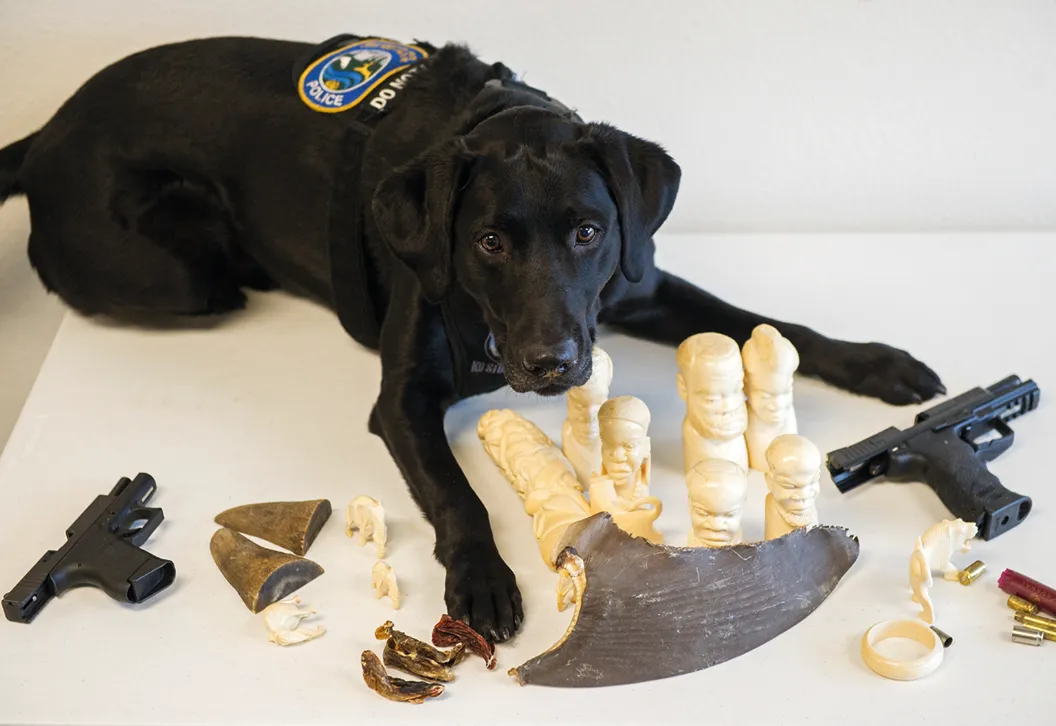
It’s time-consuming for humans to inspect shipments by hand in an attempt to determine the contents of the packages being transported. But for a master sniffer like Benny, it’s easy. He can search a large area or many items a lot faster than a human could, and do it with a higher degree of accuracy. When he hits on a target, he’s immediately rewarded with a game of fetch with his favourite orange ball.
Around the world, sniffer canines like Benny help fight the trade in endangered wildlife. Dogs have become an important weapon in the fight against elephant and rhino poaching in Africa, where they work to identify both animals and criminals, getting the scent of poachers from crime scenes.
2. Sniffing out poison, Tagus Natural Park, Portugal
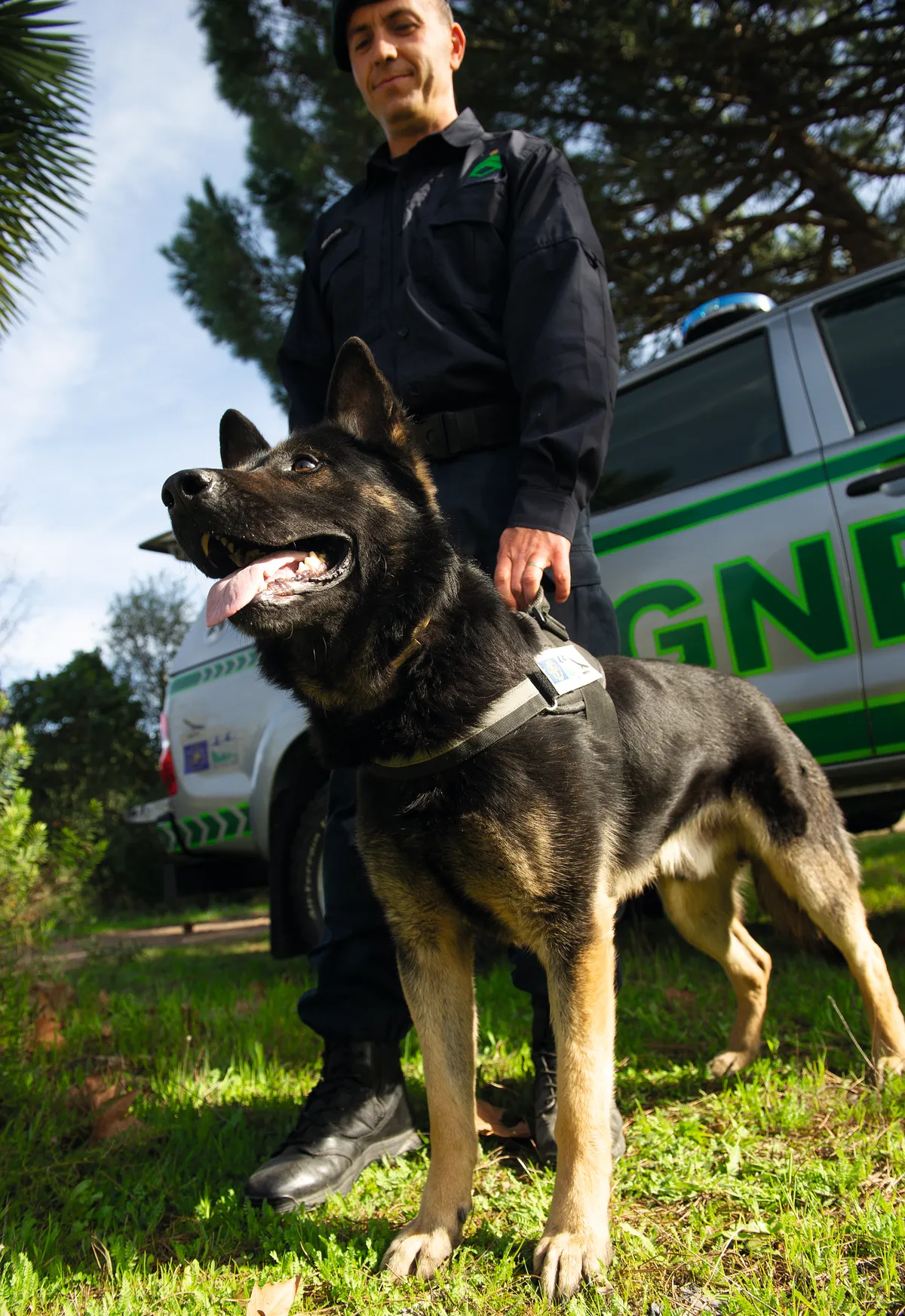
Though the use of poison to kill wildlife is forbidden in Europe, toxic substances are still available to purchase, and illegal poisoning continues, especially as wolves and bears return in increasing numbers. In 2003, Portugal recorded its worst incident of wildlife poisoning, in which 33 griffon vultures, three cinereous vultures and three royal kites died after feeding on a poisoned sheep carcass that was being used to control feral dogs.

Detection canines were called out to help in the fight against illegal wildlife poisoning. The Portuguese National Republican Guard now employs nine dogs in different regions of the country, which are trained to detect poisoned bait in the field. Pico and Chico, both German shepherds, are two of these dogs, and spend most of their time looking for poison in Central Portugal’s International Tagus Natural Park, a biodiversity hotspot and refuge for many threatened species, including the Iberian imperial eagle.
Protected by a muzzle, the canines sniff out carcasses that provide the police with the evidence they need to track down the perpetrators. Under the canines’ watch, the park has become poison-free. “People talk in cafés, hunters talk among themselves, because they see the dogs. People know the police have the tools to look for poison, so they change the way they do things,” says biologist Samuel Infante.
3. Labrador Willow is a friend for Bahati the cheetah, San Diego, USA
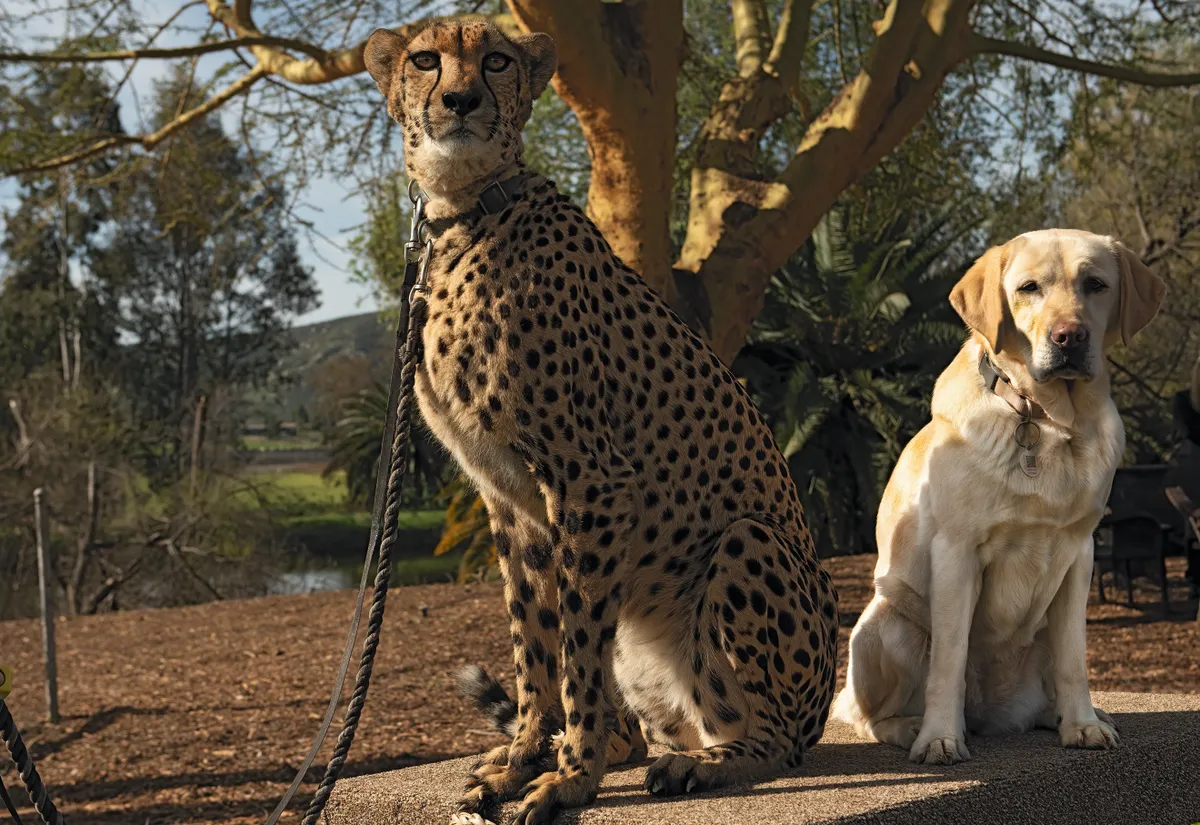
Since the 1980s, the San Diego Zoo Safari Park has assigned companion dogs to cheetahs that are part of the zoo’s captive breeding programme. The pairing idea began as a way to provide play and companionship to cubs born without siblings.
Cubs have many needs that can’t be met by humans, and that’s where the dogs come in
Female cheetahs are known to forsake single cubs. When that happens, humans must step in to raise the abandoned youngster, but cubs have many needs that can’t be met by humans, and that’s where the dogs come in. “There are a lot of critical behaviours that the cub needs to experience. Part of it is socialisation, part of it is comfort,” says Kristi Burtis, director of wildlife care for the San Diego Zoo Safari Park.
Cubs are usually paired with canine companions when they’re about four months old, after their vaccinations. The dogs are two months older. The zoo safari park currently has two cheetah-dog pairs: Bahati, a seven-year-old female cheetah and Willow, a Labrador; and Ruuxa, a seven-year old male cheetah and Little Rae, a four-year-old Rhodesian ridgeback.
4. Oddball the sheepdog helped a penguin colony recover, Middle Island, Australia
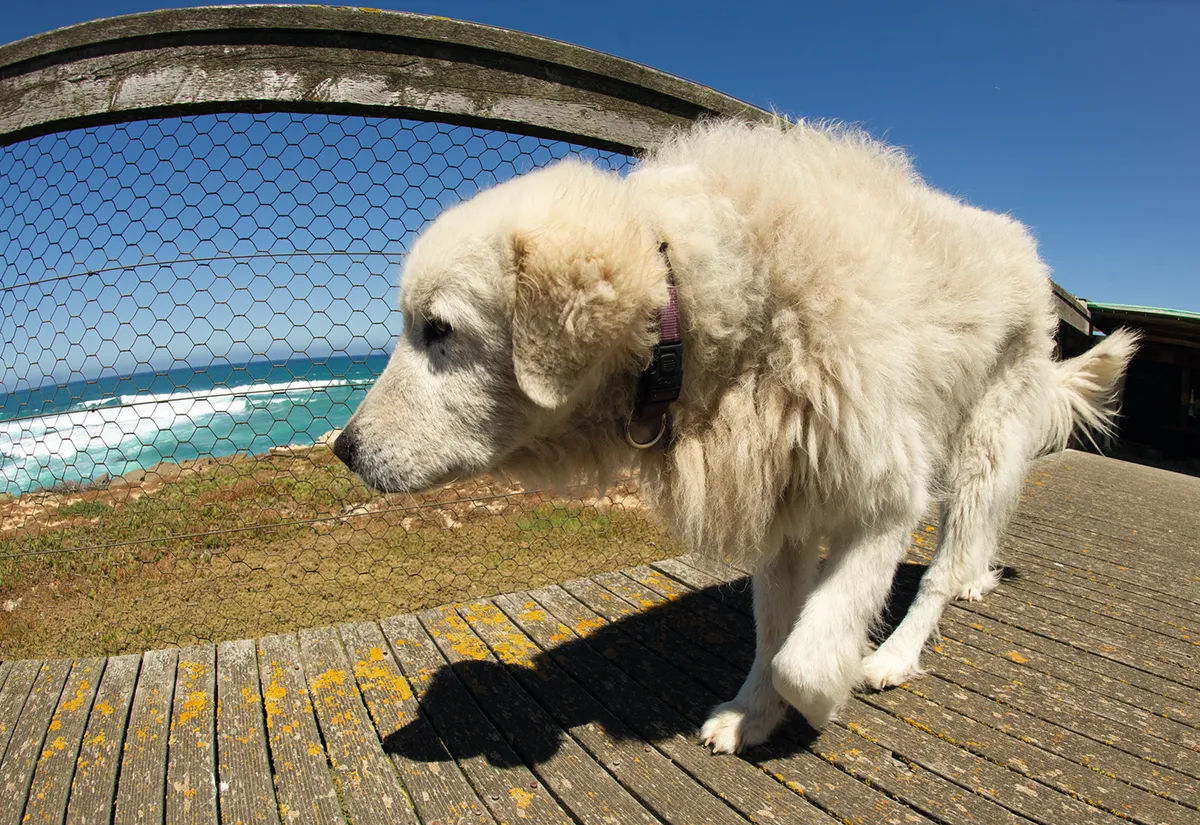
Middle Island, a small island connected by a tidal sand bridge to Warrnambool in southwestern Australia, used to be a great breeding ground for little penguins, the world’s smallest penguin species. But when foxes discovered they could reach the island at low tide, they nearly wiped out the colony. By 2005,there were fewer than 10 birds left.
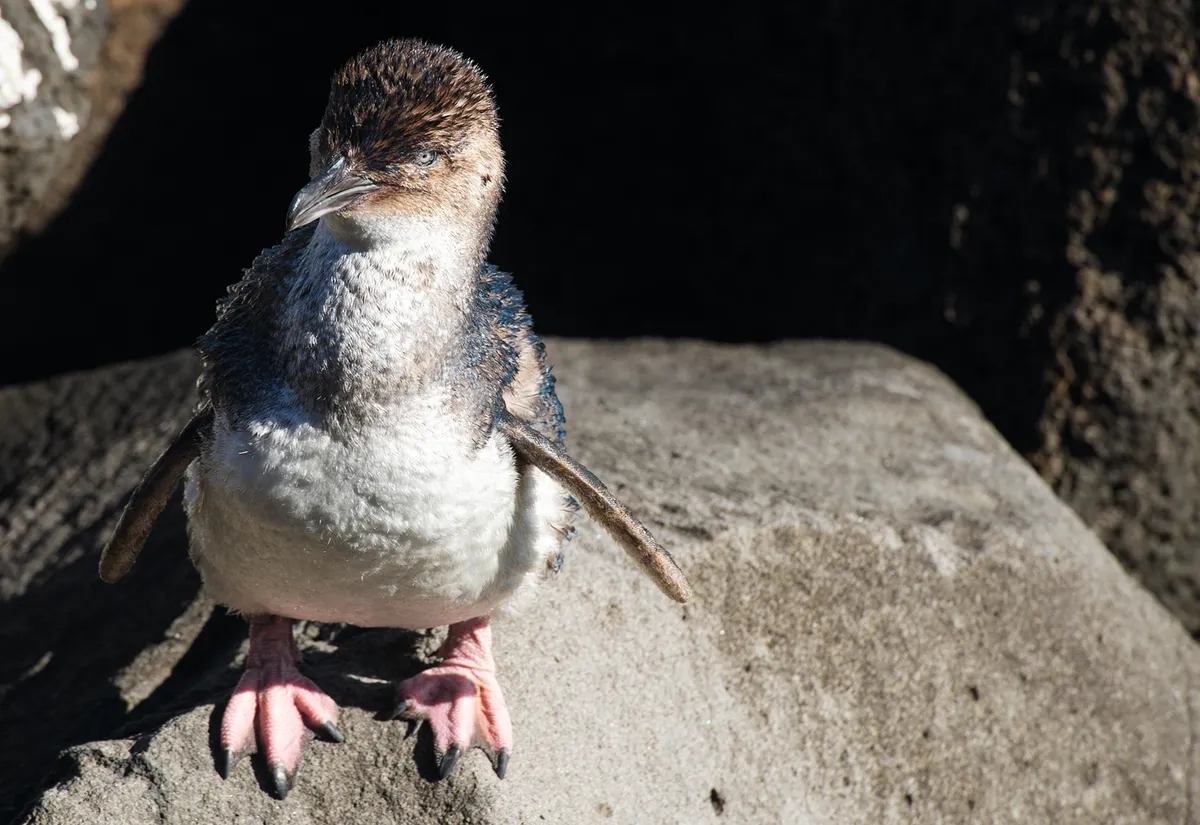
Meanwhile, local farmer Allan Marsh had been training Maremma sheepdogs to protect his chickens from foxes. This breed originated in Italy, where they guard livestock from wolves and bears. When Marsh heard about the penguins, he suggested an alliance.
In 2006, Oddball was the first Maremma tasked with protecting the penguins during the breeding season. His presence was a huge success – no penguins were attacked by foxes on Oddball’s watch. The scheme continues today, with several Maremma dogs watching over the birds and the colony is bouncing back, with 70-100 birds counted in 2020.
5. Hilo the black Labrador helps find invasive species, Alberta, Canada

Dressed in a bright orange vest, Hilo is standing on the shore of Upper Kananaskis Lake, ready to work. Nose to the ground, the black Labrador-golden retriever cross starts sniffing out the minuscule, camouflaged zebra mussel. Hilo is part of a team of three specially trained dogs that monitor Alberta’s water bodies and inspect watercraft for the presence of unwanted tiny mussels.
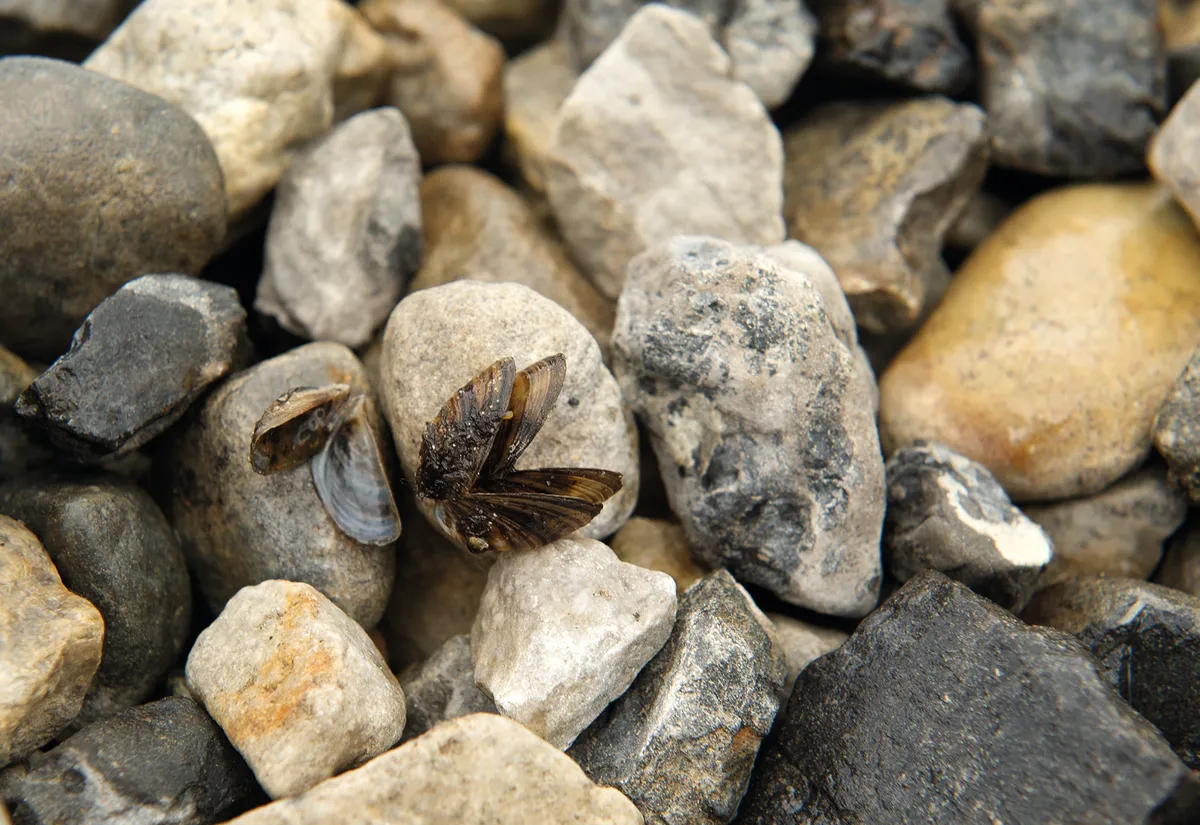
For Hilo and his two canine friends, detecting mussels is all fun and games, but this invasive species is one of Alberta’s greatest enemies, despite measuring just 2-2.5cm in length, on average. The mussels came from eastern Europe to the Great Lakes region of Canada in the late 1980s, catching a ride in the ballast water of cargo ships. Once the mussels colonise a water body, they multiply quickly and harm aquatic systems, disrupting food webs and outcompeting native species.
In 2014, Alberta conducted a study that compared the performance of trained canine-handler teams to human inspectors in detecting mussel-fouled boats. In the test, the dogs correctly identified 100 per cent of watercraft harbouring mussels to the humans’ 75 per cent. The canine teams also worked more quickly and averaged 3.5 minutes to inspect each boat, including reward play after detection, while it took humans more than five minutes to do the same job. Alberta remains mussel-free for now and was the first jurisdiction in Canada to employ detection canines to keep the unwelcome aquatic visitors out of the province’s water bodies.
6. Herding dog Pilot steers birds away from planes, Vancouver, Canada
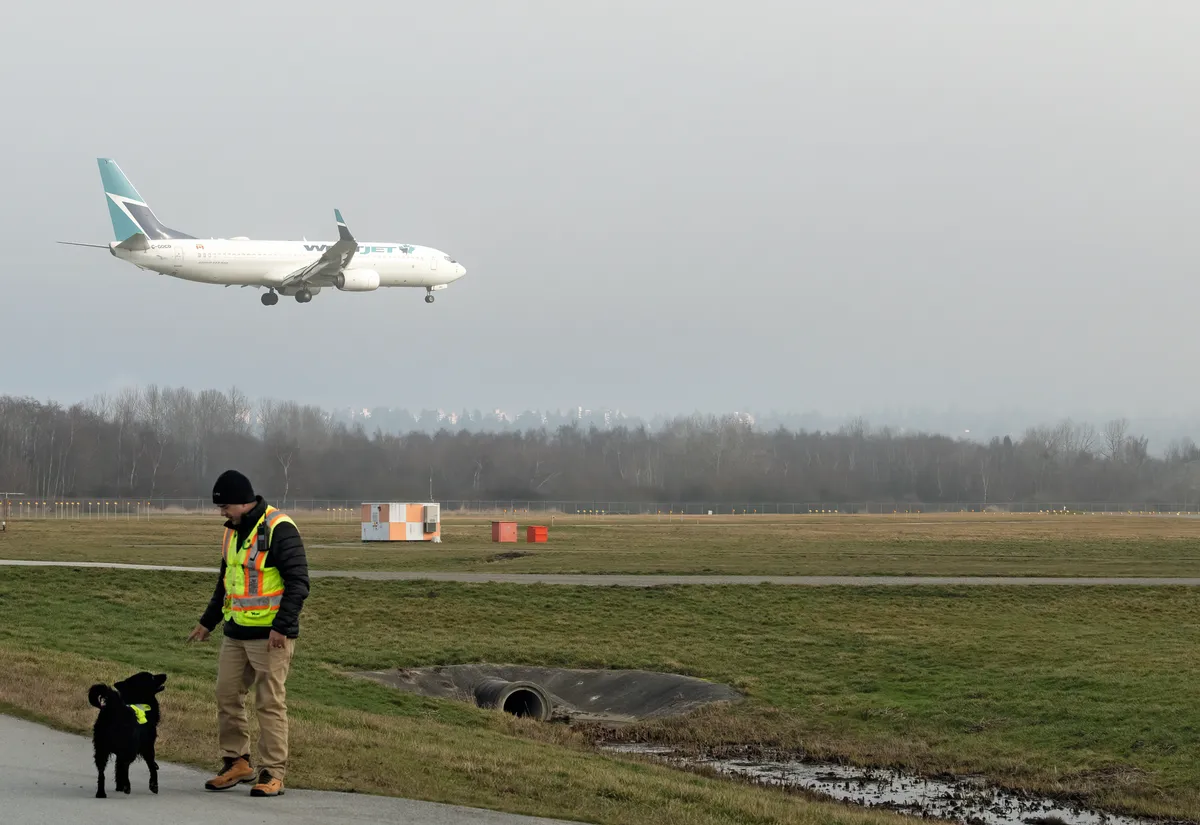
Pilot came all the way from Finland to take a job at Vancouver’s International Airport. He is a mudi, a Hungarian breed known for its strong herding instinct and calm personality, and at three years old, is tasked with keeping the local wildlife safe.
For the past 15 years, dogs have been used to scare birds away from the airfield
The airport is located on the Fraser River estuary, a critical crossroads for millions of migrating birds that converge on the mudflats, marshes and shallow tidal flats. To reduce the risk of collisions between planes and birds, the Vancouver Airport Authority operates a wildlife management programme. For the past 15 years, dogs have been used to scare birds away from the airfield.
Pilot is deployed in a patrol vehicle with his handler and, together, they inspect the airfield for ducks, geese and herons. When they come across a flock, Pilot runs towards the birds at full speed, dispersing them.
In 2020, the Airport Authority moved 1,486,555 animals from the runways, using a variety of tactics including dogs, human presence and pyrotechnics. “Birds can get habituated to pyrotechnics and sirens, but they don’t easily habituate to dogs that are perceived as a threat,” says Prabin Joshi, wildlife site manager and Pilot’s handler.
7. Alli finds rare frogs hiding in muddy wetlands, British Columbia, Canada
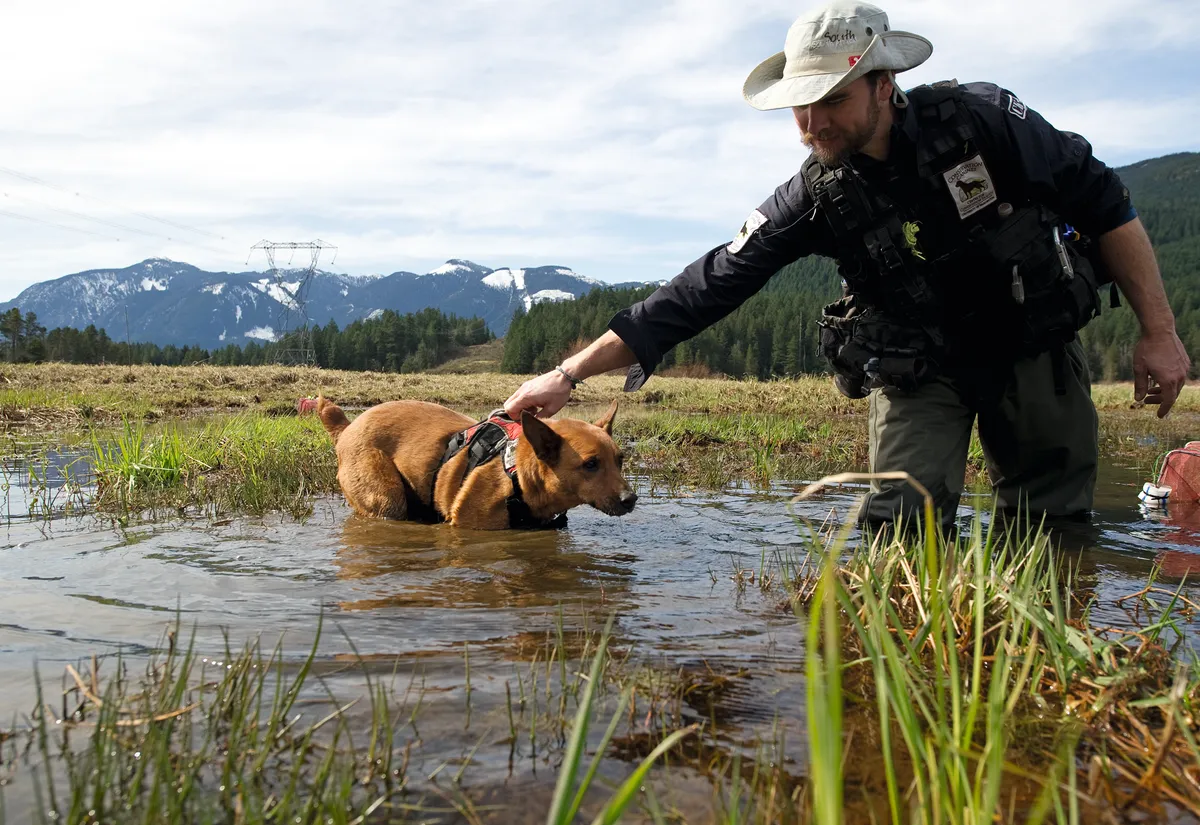
The Oregon spotted frog is one of Canada’s most endangered amphibians. Fewer than 700 remain, in six isolated populations in British Columbia. To conserve the frogs, researchers need to understand where they live and how they use their habitat, but finding the amphibians using traditional survey methods is laborious and unreliable. Surveyors must walk slowly in knee-deep mud during the short frog-breeding season and can easily miss them.

Enter Alli. Formerly a drug-detection dog, Alli was retrained to sniff out Oregon spotted frogs and has since helped to track down these and many other endangered species. Alli is now retired, but other dogs are following in her footsteps. Since 2016, six have been helping scientists from the San Diego Zoo Wildlife Alliance to reintroduce endangered mountain yellow-legged frogs in Southern California. “Like many amphibians, the mountain yellow-legged frogs are cryptic, which makes them hard to detect in the wild,” says the Alliance’s Debra Shier. “When we get the dogs out, we can be more efficient at evaluating the frogs’ presence or absence.”
Shier and her team are now considering training the dogs to detect the chytrid fungus, a deadly disease that impacts amphibians globally.
8. The brave big game hunters now helping keep grizzlies safe, Montana, USA
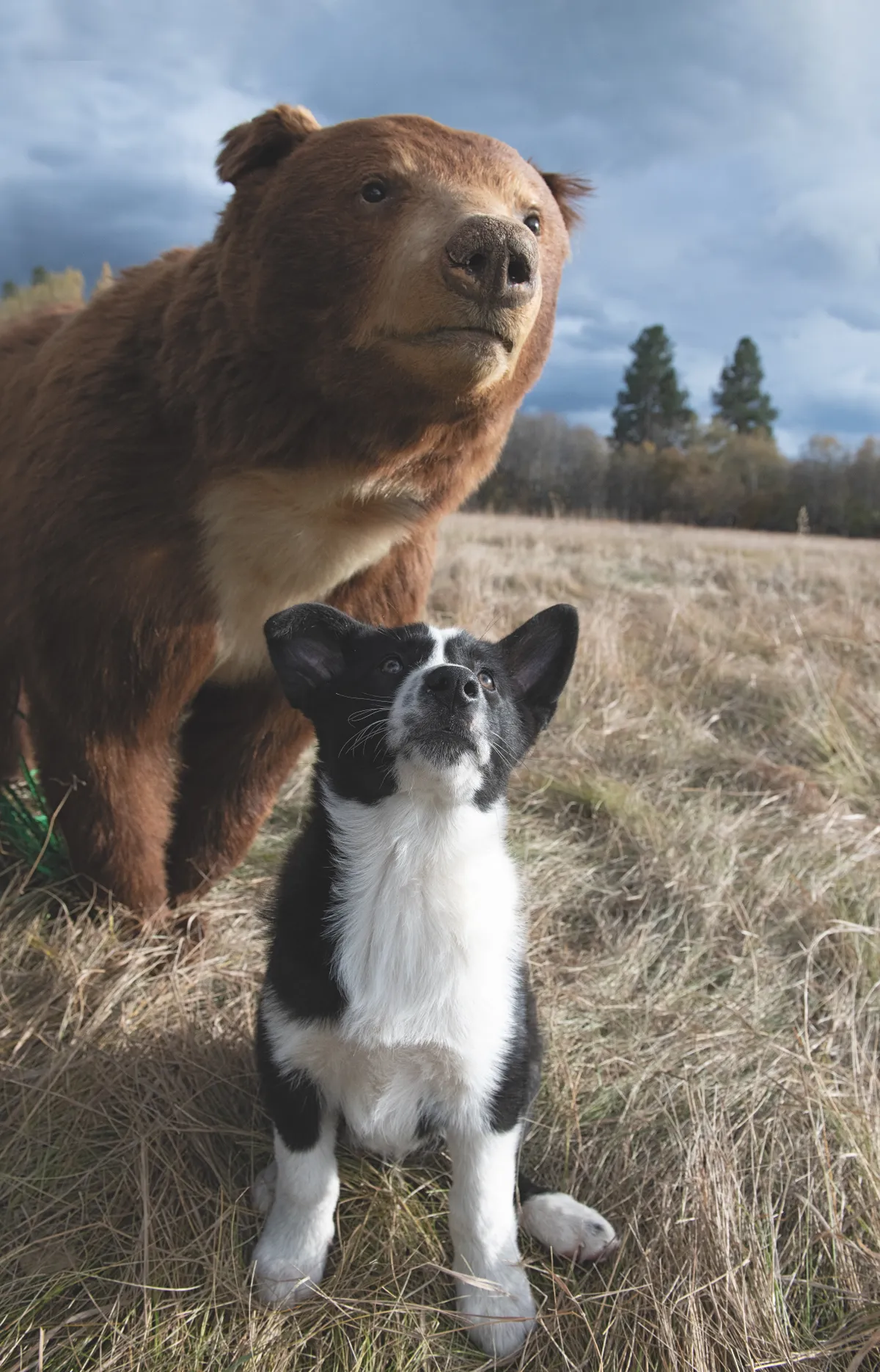
In North America, bears can get into trouble by visiting backyards or campsites in search of food. When bears mix with humans, they usually lose. To prevent deadly conflicts, biologist Carrie Hunt has turned to Karelian bear dogs.
Originally from north-eastern Europe, this breed is known to be fearless and capable of standing up to large mammals such as bears. Over the centuries, they’ve been used to hunt big animals in Russia and Finland. Today, these dogs are employed in the USA to ward off bears that approach human settlements.
Karelian puppies go through rigorous training at the Wind River Bear Institute. In an ultimate test of bravery, the pups must face a taxidermied grizzly bear. Just 20 per cent of recruits make the cut.
9. Spotting orca scat helps researchers, Salish Sea, Washington State, USA

For over a decade, scientists have been using dogs to find the scat of the endangered southern resident killer whales in the Salish Sea in Washington State. Orca scat is small and sinks quickly, but trained detection dogs can sniff it out from a nautical mile away, even in fast-moving currents. Scat contains a lot of information about an animal’s health, diet, reproductive status. Thanks to the dogs’ help, researchers have discovered that the orcas went through unsuccessful pregnancies due to malnutrition and stress, a vital clue for informing conservation efforts.
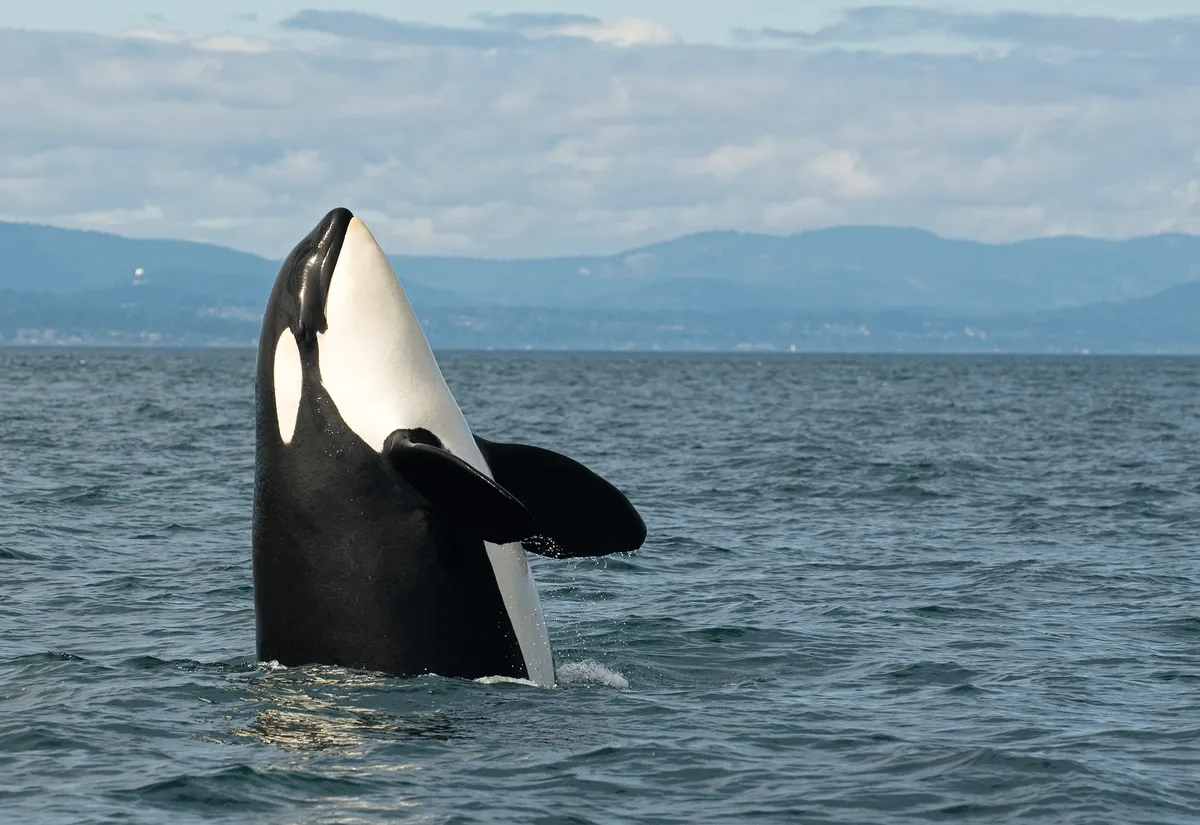
Dogs can be trained to detect the scat of any species. When wildfires ravaged Australia in 2020, dogs were deployed to find the scat of injured, malnourished or isolated koalas. The animals could then be rescued and rehabilitated before being set free.
10. Guardian dogs help protect livestock, Namibia
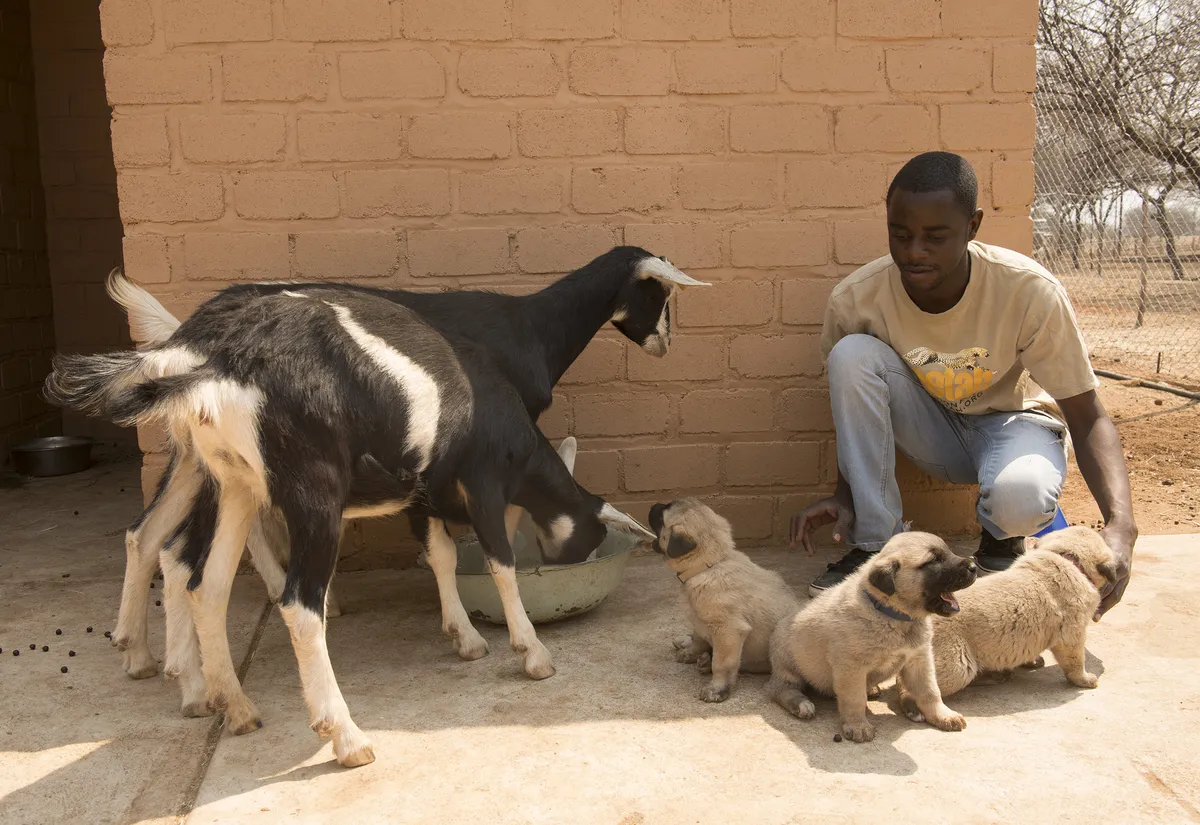
For millennia, dogs worked alongside shepherds to protect livestock against the wolves and bears that used to roam in many regions of Europe. After these were persecuted and disappeared in the 19th and 20th centuries, most livestock guardian dogs lost their jobs.
As predators are now returning or expanding, guardian dogs are enjoying an unexpected revival in their role to keep livestock safe and help people make peace with predators. Today, there are about 50 recognized breeds of livestock guardian dogs, on duty in various parts of the world.
Their colours and hair coat may vary, but they all have certain qualities in common: in addition to their large size meant to impress predators, they are trustworthy and protective of their herd. They will place themselves between the livestock animals and the threat, barking loudly. If needed, they will chase away the predators, but often their mere presence is sufficient.
In an effort to reduce conflicts between the farmers and the felines, the Cheetah Conservation Fund turned to dogs
In Namibia, these guardian dogs play an important role in the endangered cheetah’s survival. Between 1980 and 1990, the Cheetah Conservation Fund (CCF) estimates that 7,000 cheetahs were killed by farmers who held them responsible for livestock losses. In an effort to reduce conflicts between the farmers and the felines, the CCF turned to dogs. Since 1994, the organisation has placed 700 Kangal shepherd dogs on farms across the country to protect livestock against predator attacks. According to Dr. Laurie Marker, CCF’s founder and executive director, livestock losses have been reduced by 80 to 100 percent on farms with guarding dogs.
Top image: Hilo and his handler Cindy work together to prevent an invasive species of mussel from taking over the waterways of Alberta. © Isabelle Groc.